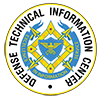In this work, we have designed, fabricated and experimentally characterized a printed graphene nano-flakes enabled flexible and conformable wideband radar absorber. The absorber covers both X (8–12 GHz) and Ku (12–18 GHz) bands and is printed on flexible substrate using graphene nano-flakes conductive ink through stencil printing method. The measured results show that an effective absorption (above 90{f852dafd27cac84fdac768484a17b914ab8ab8a105c7cd3f00f3e5984b2da150}) bandwidth spans from 10.4 GHz to 19.7 GHz, namely a 62{f852dafd27cac84fdac768484a17b914ab8ab8a105c7cd3f00f3e5984b2da150} fraction bandwidth, with only 2 mm thickness. The flexibility of the printed graphene nano-flakes enables the absorber conformably bending and attaching to a metal cylinder. The radar cross section (RCS) of the cylinder with and without absorber attachment has been compared and excellent absorption has been obtained. Only 3.6{f852dafd27cac84fdac768484a17b914ab8ab8a105c7cd3f00f3e5984b2da150} bandwidth reduction has been observed comparing to that of un-bended absorber. This work has demonstrated unambiguously that printed graphene can provide flexible and conformable wideband radar absorption, which extends the graphene’s application to practical RCS reductions.


